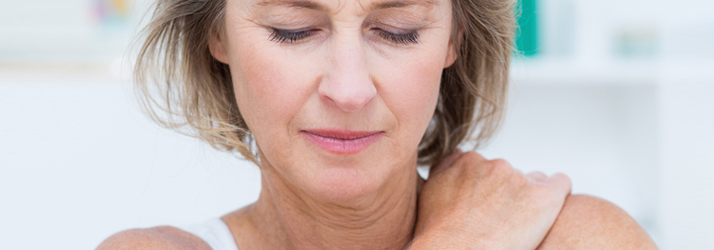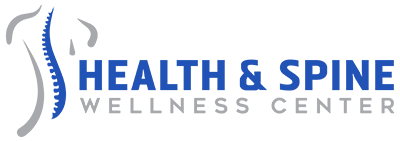Rotator Cuff Injuries In Belleville:
Everything You Need To Know

We don't even have to ask, we know that if you haven't treated a patient with the problem, you've at least heard about rotator cuff injuries. They are so common and affect so many patients that it is practically impossible not to talk about them.
Therefore, we prepared the article below. It is a review of the anatomical and biomechanical causes of rotator cuff injuries that should help you with your treatment. Read on to understand how they happen and how best to work with patients with the problem.
Shoulder stabilization with rotator cuff
Considering the large range of motion of the shoulder, we have already been able to perceive that it is an unstable joint set. The shoulder structure lets you move in almost all directions and directions by giving up stability. Therefore, the complex is subject to a number of reasonable injuries and imbalances.
Shoulder stabilization occurs through the following mechanisms:
- Tendons;
- Ligaments;
- Bone structures;
These stabilizing structures are some of the most affected by injuries. Passive ones such as ligaments, tendons, and labrum often require surgical treatment because of the severity of the injury. But why do we see so many injuries in this region that has so many stabilizers?
Let's look at ligaments for an initial example. The region is rich in them, including the head of the humerus, one of the most unstable areas in the entire complex.
However, they are unable to perform their function efficiently. The glenoid cavity, into which the humeral head fits, is shallow, so movement takes place with the highest possible range of motion. Thus, passive stabilizers are not enough to keep the shoulder stable.
Despite all the ligaments surrounding the head of the humerus, she cannot move properly. Its range of motion makes the region have less rigid ligaments and favors mobility.
Therefore, the shoulder also uses dynamic stabilizers that should prevent injuries. But considering the number of injuries we encounter on a daily basis, you've probably noticed that many people don't have very effective dynamic stabilization.
This is when the stabilizers themselves do not suffer, as is the case with rotator cuff injuries.
What is the rotator cuff?
The rotator cuff is a shoulder muscle set that dynamically stabilizes the structure. It is composed of the following muscles:
- Subscapularis muscle;
- Lesser round muscle;
- Intraspinal muscle;
- Supra spinal muscle;
- Long head of the biceps.
In addition to stabilizing, these muscles perform shoulder movements:
- Internal rotation;
- External rotation.
When the rotator cuff has its normal function, it balances the head of the humerus and directs it into the glenoid cavity. Therefore, it allows a perfect fit of the structure.
To perform humeral movements, he also recruits help from the deltoid and pectoralis major, which are often tense or little activated in cases of rotator cuff injuries.
The main tendons of the shoulder are located at the base of the rotator cuff. Therefore, we often find problems, injuries or tension in them, even when the cuff is not injured. The main ones are:
- Supraspinatus tendon;
- Infraspinatus tendon;
- Suprascapular tendon;
- Larger round tendon.
They are the tendons that connect the rotator cuff muscles to the joint structures. Without dynamic stabilization, the shoulder strains injuries, and you already know the result: tendonitis, one of the main RSIs our patients develop in the upper limbs.
Pathologies and injuries
One of the most common causes of shoulder pain we find in studios is rotator cuff injuries. In addition, the lack of activation of this muscle group makes the student have chances of developing lesions in other regions.
Bursitis, for example, can occur due to lack of stabilization. We know that the shoulder is a synovial joint with small synovial fluid pockets to support and relieve movement.
Those located in the subacromial space end up compressed when the rotator cuff fails to support the humerus. Excessive compression causes the inflammation that we often encounter.
Lack of stability also causes inflammation in the tendons and deformation of bone structures in more advanced and severe cases.
This last option happens when we have rotator cuff injuries and a tear in the muscles. The result is an excessive impact on the glenohumeral joint, which causes the cavity or head of the humerus to deform when left untreated.
Rotator cuff injuries
Finally, we'll talk about the rotator cuff injuries themselves. There are three stages to these injuries:
- Characterized by edema, inflammation, and hemorrhage of the bursa and tendons.
- Bursa thickening and tendon fibrosis occur.
- It leads to rupture of the cuff muscles and consequent bone changes in the humerus and acromion.
Young people and adults suffer a lot from injuries in the first two stages, especially when they play sports without proper supervision and preventive work.
The last stage is more common in individuals over 40 years of age. The most common solution is surgery when we reach the third stage, but we can prevent this before reaching such an evolved lesion.
Monday
9:30am - 1:00pm
2:30pm - 7:00pm
Tuesday
Closed
Wednesday
9:30am - 1:00pm
2:30pm - 7:00pm
Thursday
9:30am - 1:00pm
2:30pm - 7:00pm
Friday
9:30am - 1:00pm
2:30pm - 7:00pm
Saturday & Sunday
Closed
Health & Spine Wellness Center
544 Washington Avenue
Belleville, NJ 07109

